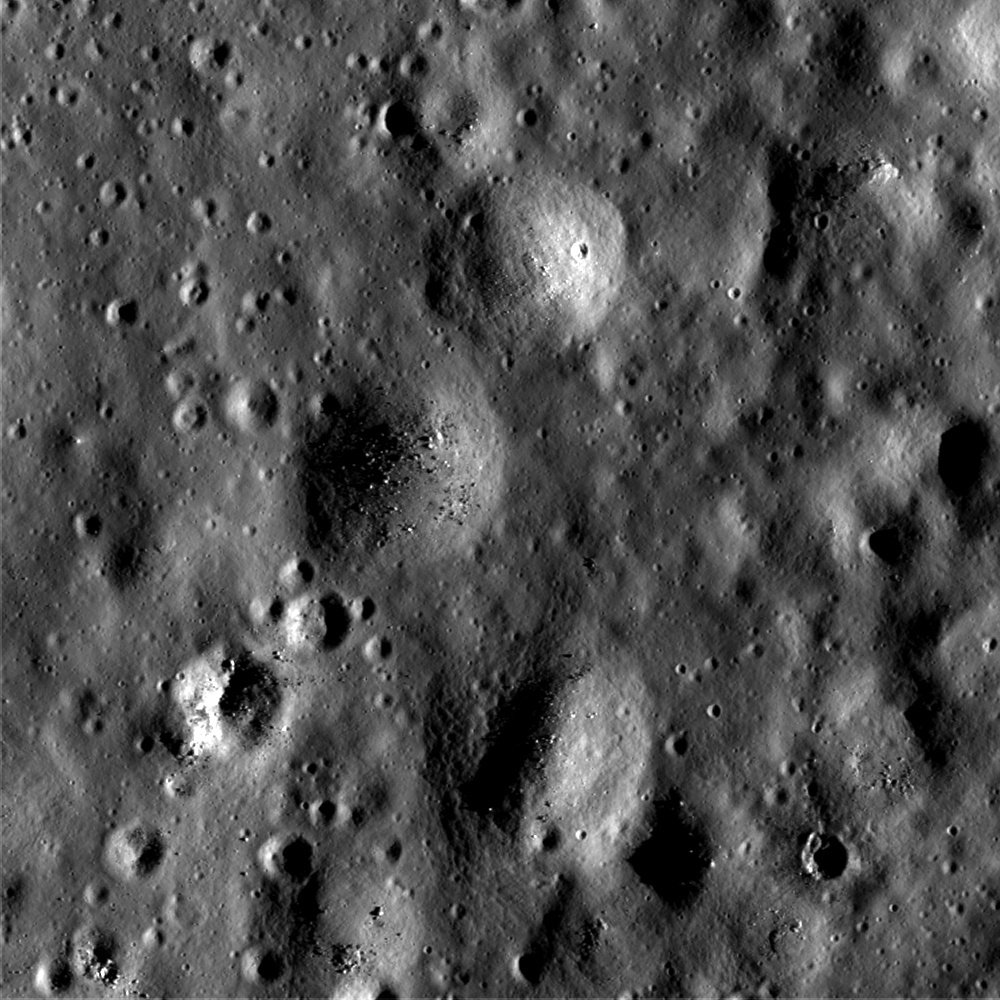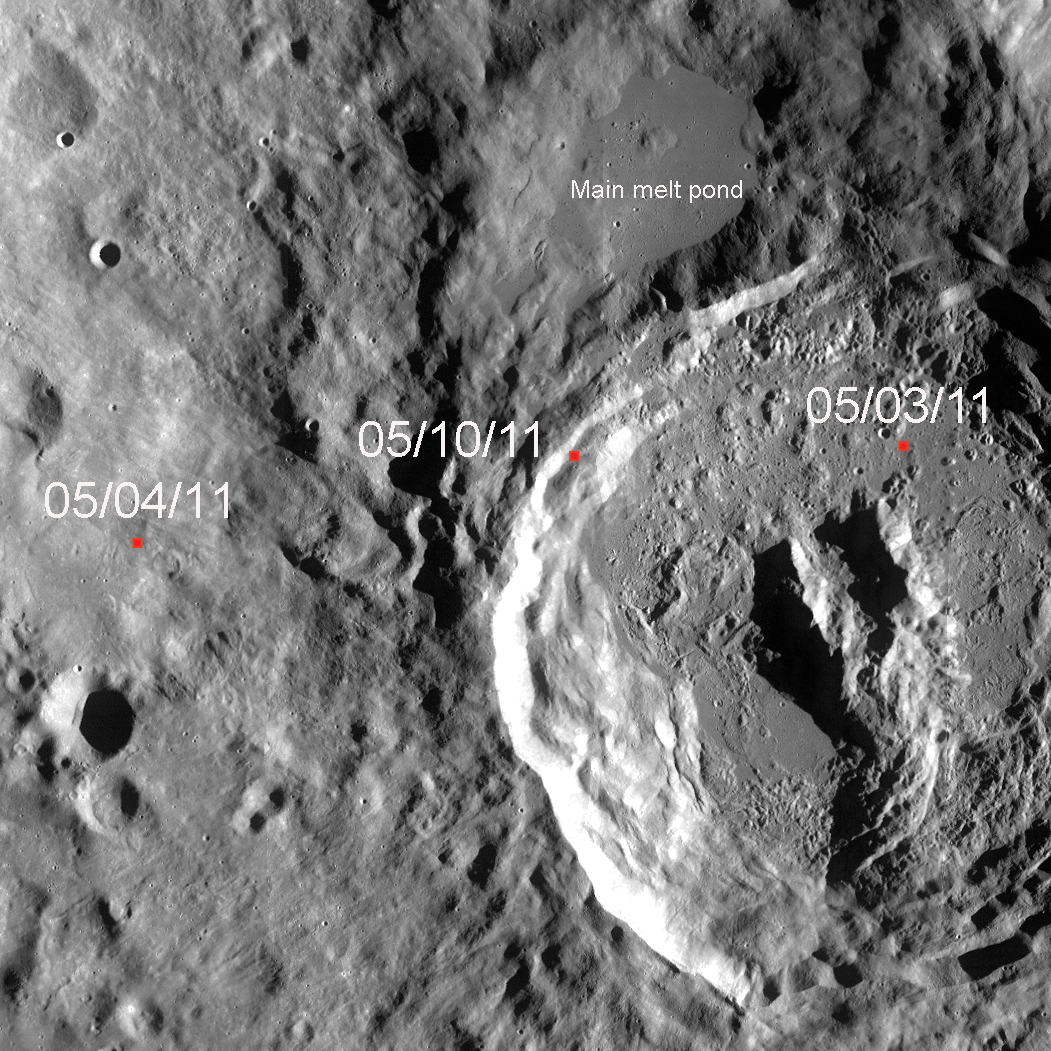
What are these circular features? These mounds are found within a large pool of now-solidified impact melt covering the floor of King crater (5.0°N and 120.5°E). North is up, and sunlight is coming from the east, which is how we can tell at a glance that these are positive-relief constructs, and not negative-relief impact craters (compare with some of the obvious craters in the image to convince yourself that this is true). There are many such mounds on the King crater floor. They are often circular, but occur in groups with irregular outlines as well.
One interpretation of the mounds is that the King impact melt remained hot long enough after accumulating as a pond, and partially crusting over during cooling, to still "ooze" here and there through holes or cracks in the fresh crust. The soft melt quickly cooled after reaching the surface and built itself up vertically while spreading out laterally at each point where this happened ... think of pressing a board with holes in it on a layer of wet mud or toothpaste.
While this explanation may sound similar in some ways to a volcanic process, this kind of "extrusion" differs from classic volcanism in a very fundamental way: The source in such a model is a shallow, surface emplacement of short-lived, molten material (the impact melt), as opposed to magma coming from the mantle or crustal magma chambers, which stay molten for much longer periods of time and tend to produce higher-pressure and more voluminous extrusions. Perhaps the weight of the cooling melt crust was enough to cause this (the board in our thought experiment). Perhaps another force assisted. Or perhaps the mounds formed in a way completely different from this scenario. Such are the problems of planetary science, and we can always rely on Nature to surprise us by presenting situations that do not lend themselves to easy interpretation or classification; hence the "anomalous" status for today's Featured Image. A visit to King crater would help solve the mystery!
Continue exploring the full NAC image and see what other features can be found.
The context image below shows the location of today's Featured Image (red square at 05/03/11) and its relationship to the King crater region:
Related posts:
Published by James Ashley on 3 May 2011
